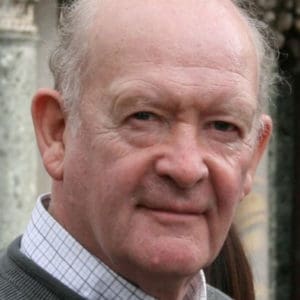Editor’s note: David Torkington continues his series on prayer with the fourth and final section, “From Meditation to Contemplation”. Read part 39 here, and begin with part one here.
The Mystic Way Part IV
It is all but impossible to determine with any accuracy when mystical contemplation begins, as everyone is different and so are individual circumstances. When believers begin to pray seriously and the context of their particular vocation determines the way in which they must now learn how to pray; it is quite different from before.
The best I can do therefore, is to detail my own unique experience of how this happened to me in the hope that together with the signs given in the Catholic mystical tradition, and in the regrettable absence of a good and trustworthy spiritual director who understands the mystic way, you will be able to discern the way forward for yourself.
A Personal Account
My own journey into the Mystic Way was comparatively swift because I thankfully found the ideal conditions. Firstly, my desperate need for God was heightened by my very serious dyslexia which was not understood in those days. When at a retreat I was told that God knew everything, I realized that he might not only be able to understand me but also help me.
The school that I went to also served as a junior seminary, so each week the spiritual director taught us how to meditate. My need was far greater than all the others so I gave more daily time for meditation than any of them. It was there that I decided to try my vocation as a Franciscan to continue the prayer that became so easy for me.
Never before had I experienced such misery as during that year as a novice. My dyslexia meant that my Latin was virtually non-existent making the Latin of the Divine Office, the Franciscan constitutions and books on liturgy and spirituality virtually unreadable. However, I found my personal heaven in the two hours we had to ourselves after compline each evening. I spent the time lost in the meditation that was my greatest joy.
The Contemplation of St. Ignatius of Loyola
I learned a way of meditation from St. Ignatius’ Exercises that involved visualizing individual scenes from the Gospels that I found very helpful. This not only involved picturing the Gospel scenes but listening to the words that Christ said or that were said to him. I loved it. I had a good imagination so I could easily leave the space and time world where I was so unhappy, to go back into the past to the Holy Land to visit the place where Christ was born and lived, suffered and died.
It was not just my mind that was involved in this form of visualization but my memory, my imagination and my emotions too that ignited my heart and began to react, drawing my whole self into the experience. After Easter, everything came to a head when I was moved more deeply than at any other time as I was visualizing the sending of the Holy Spirit on the first Pentecost day.
A New Dimension in My Spiritual Understanding
The more I read and reflected on The Acts of the Apostles and in particular on the conversion of St. Paul, a new dimension in my spiritual understanding awoke within me. I understood something that I never understood before: the Jesus whom I had come to know and love more meaningfully than ever before was still alive and loving me now.
Now his love, the Holy Spirit, was drawing me up into his mystical body where all other Christians who love him ‘live and move and have their being’. It was here that I would one day be reunited with all whom I love: my parents my brothers, my close friends, and relatives. It would then be possible, as all the sin and selfishness that prevented us from being as close as we would have wished on earth would be purified by the Holy Spirit. Then we would all be ready to continue our journey together into infinite love while being drawn ever more closely to each other in Christ, in whom and with whom we first glimpsed and then gazed upon the glory of God.
My whole prayer experience was so thrilling and moving, that I could not wait for compline to end so that my personal prayer could begin. I was so moved by success at prayer and how that prayer enabled me to be moved in every part of my being that I began to believe that I was about to enter the Mystical Marriage. I even believed that I might, sooner rather than later, begin to develop mystical powers like levitation and bilocation!
I Suddenly Found Myself in a Black Hole
Then one evening when I came to pray as usual, I found myself in a black hole. I had not heard of St. John of the Cross or the Dark Night. I thought it was a temporary blip and ‘normal service’ would resume as soon as possible, but it did not, nor has it ever returned in quite the same way.
I asked my confessor at the time and other priests and theologians later, but the only answer I received was, ‘Oh, we all go through first fervor at the beginning.’ When I asked what happens next, they all seemed to say the same: ‘You just get on with your life’. But for me, prayer was my life and for a dyslexic like me, it was my only hope on which I had pinned everything. Perhaps that is why I nevertheless continued to give the same time for prayer each evening despite the fact that ‘sweetness and light’ had deserted me for ‘darkness and depression’. I could not have been easy to live with at the time, but I came to realize that the other novices preferred ‘brother misery’ to ‘brother sweetness and light’, about whom I heard one novice say to another, ‘He is just too good to be true!’
The Beginning of the Dark Night
Because I had the perfect conditions in which to pray and because therefore my prayer was so vibrant, the end of first fervor and the beginning of the Dark Night seemed to take place suddenly, almost at a particular moment in time. However, because the majority do not have these perfect conditions, the change from meditation to contemplation is not so immediately apparent. A person just notices that over a period of time the meditation that was once so helpful simply dries up.
Mystical writers often use such phrases as ‘Then God leads a person into contemplation.’ Or, ‘At this point in their spiritual journey God takes the initiative by leading them into the Dark Night.’ What does in fact happen is that the love that developed in meditation reaches a certain intensity and sensitivity that enables it to suddenly become aware of and reach out to God. Although he has been close to us at all times, we have failed to recognize him because our love was not sufficiently sensitized to become aware of his presence. St. John of the Cross calls this strange new world that we have been drawn into ‘The Dark Night of the Soul,’ but he also calls it contemplation.
The longing for God’s presence that originally drew me to meditation was so intensified there, that it now drew me out of meditation and onwards into mystical contemplation. For it was here alone that my desire to love God would be so purified that it would be able to reach out to and enter into union with him, not as I had been picturing him in my imagination, but as he is in himself. Nevertheless, it seemed to lead me into a dull and dreary world compared to the world of sweetness and light that had so delighted me before.
Falling in Love with Love
This desire is not only there in prayer, no matter how dark it might seem, but it is there outside of prayer too. I remember this happening to my brother and he spent hours just mooning around doing nothing in particular and not particularly wanting to do anything. My mother said, ‘Oh he is in love with love’, and she was right. When he later applied to join the Cistercians, it became evident that he wanted to follow his heart’s desire to a place where his contemplation could reach out to and touch the One he desired more than any other.
At first, contemplation is called dark or confused contemplation because our heart’s desire needs to be purified and refined in many months– if not years– before the Love of God becomes tangible. That it eventually does is certain for those who persevere, but as St. John of the Cross says, very few remain on course because of ignorance. When many more do, then renewal is on the way as the Holy Spirit who comes to those whose patience and perseverance in adversity enables them to receive him.
David Torkington is the author of Wisdom from the Christian Mystics which complements this series.
Image used with permission of Pixabay.





